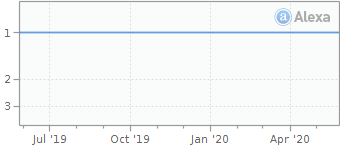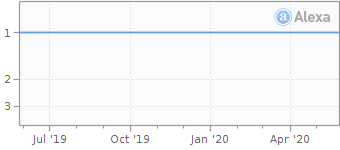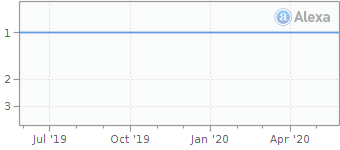The exponential growth of technology makes me think of Burton Malkiels book A Random Walk Down Wall Street, whose main thesis was that the average investor cannot beat the market because without perfect information, it is impossible – or nearly so – to predict future asset prices.
Thus, when I read the 2010 predictions of Mashables Peter Cashmore, my gut reaction was to at least somewhat discount the predictions, since, after all, who can tell whats going to be hot one year from now? After introspection, I realized the analogies to Malkiels book still apply, except people like Cashmore play the Peter Lynch and Warren Buffet roles to my average investor role.
While I will get to my thoughts on Cashmans predictions, I should first actually answer the question posed in the title: can we predict trends for 2010? I think that we can predict the trends that will be forthcoming, but we cannot predict how those trends will come to fruition. Those of us who are on the cutting, but not bleeding edge of technology can generally see where there are market needs, but are far less successful at identifying which of a handful of nascent technologies will be the final answer to meet the market need. Its why venture capitalists have portfolios of investments rather than betting the farm on one investment; they diversify risk because they can only imperfectly predict the future.
I often get posed the question “Whats going to be the next [Twitter/Facebook/YouNameIt].” Often , the answer is exactly the same application. First mover advantage yields a pretty strongly defensible market position. Even successful technologies dont die overnight. They usually face a long, slow, steady decline. The decline of MySpace is a good example.

As Facebook as grown, it has both gained new users and cannibalized MySpace users.

Compare both of these to the almost overnight growth of a popular, rapidly growing, and, mostly, virally spread website, PeopleofWalmart.

In the first two, the trends were predictable at the beginning of 2009, but NOBODY could have predicted the third site because it didnt even come out until August, developed nearly overnight by a group of friends. What could have been predicted, though, was that virally spread socially edgy websites would gain more traction, due to the success of LOLcats, FailBlog, and others.
Thus, predicting the “next” Twitter or Facebook is a nearly impossible task, but predicting that there will be a new website or application which consumes more than 10 minutes of your time daily that currently doesnt exist is a pretty easy one. I know. Im going out on a limb.
Now, let me give my thoughts on Cashmores projections. Ill categorize them into three buckets: the read-write-share web (a definition of semantic web), the cannibalization of devices and providers by subsuming technologies, and the online socialization of free time.
- The read-write-share web. The growth in the use of Twitter means that more users of technology are expecting real-time responses rather than delayed, or even near real-time responses. As more information becomes available, the need for filters of that information grows. Users want to know that not only is the information they search for relevant in both content AND time, but that the source of the information is trustworthy. I expect recency to become more of a factor in search content and identify verification services will grow into a sustainable niche industry, rather than having to trust that @iamtherealbrettfarve is actually Brett Favres Twitter account. I also expect the growth of myopenid as a centralized arbiter of identity across multiple applications.
- Cannibalization. The Holy Grail of personal devices is a usable phone cum music player cum GPS cum book cum computer cum entertainment station cum television cum [every other piece of technology you could imagine]. The iPhone and Kindle have started this collapsing chain. The iPhone has cannibalized iPod sales, since the iPod also is contained within the iPhone. The Google Android offers turn-by-turn directions, eliminating the need for a GPS device. The list goes on. Consumers will expect their portable technologies to do more and cost less and could signal a decline in specialized devices.
- The online socialization of free time. Who was playing Farmville this time last year? Nobody. It didnt even start until June of 2009. How many play now? 63.7 million as of November, 2009. (Information cited here.) The kids of 40 years ago got all of the kids in the neighborhood to play football or baseball. The kids of 20 years ago got their friends over to play Atari or computer games. Now, people play games online with all of their friends. We couldnt have predicted FarmVille specifically, but the growth of multiplayer online roleplaying games such as World of Warcraft and the strength of fantasy sports leagues pointed to the trend. I predict not only new games, but also the socialized attempts to corral free time for good – solving difficult problems, organizing for causes, and trying to make the world a better place.
There is one prediction that Cashmore doesnt appear to make which I will – the appearance of the app which manages the work/personal life identity divide. Since many people now use social media for professional purposes just as much as for personal purposes, they get overwhelmed with the notion of separating work from personal life. It blends into one amorphous existence where someone can never quite get away from work. I predict that by January 1, 2011, when someone asks me how they can separate their personal and professional social media use, I can answer confidently, “Theres an app for that!”